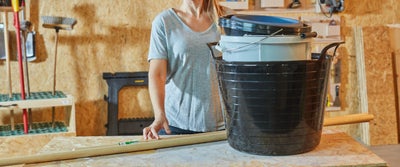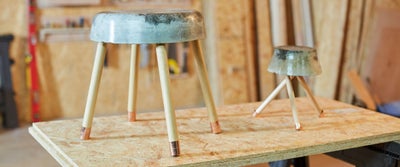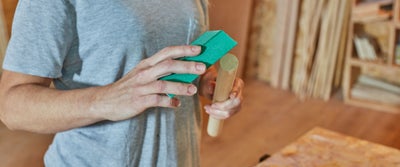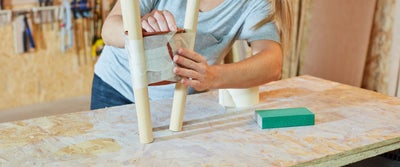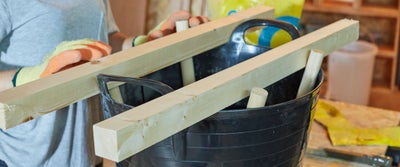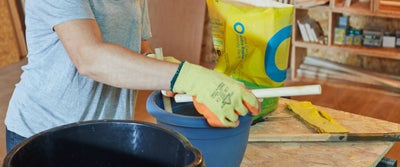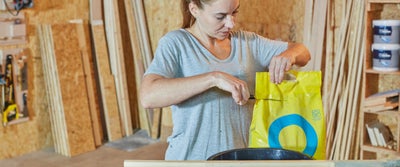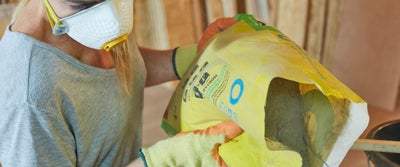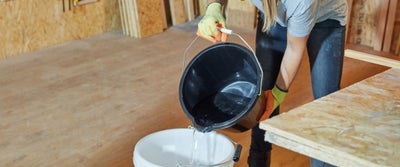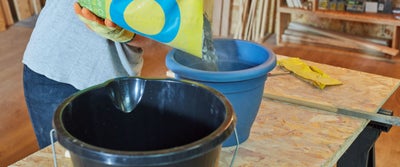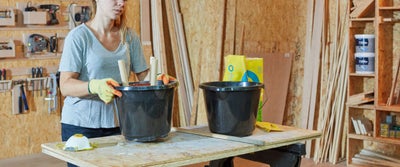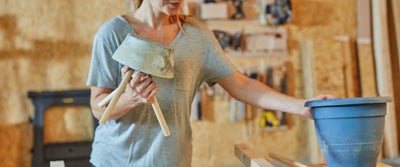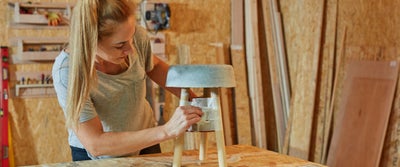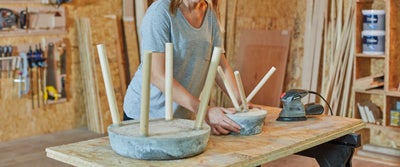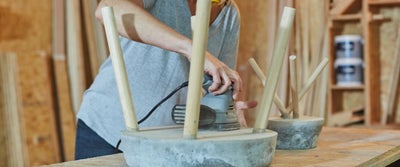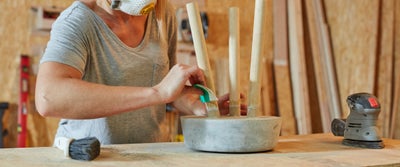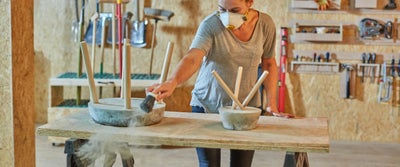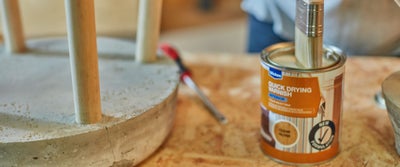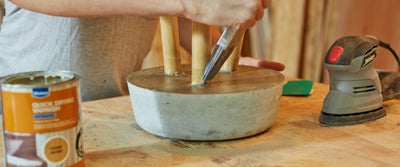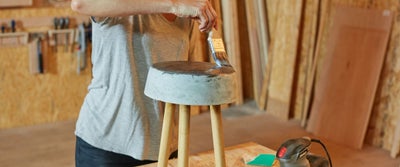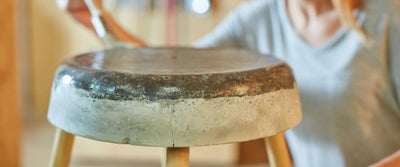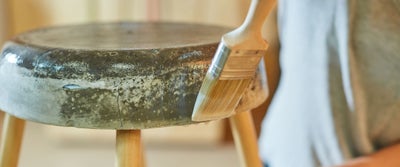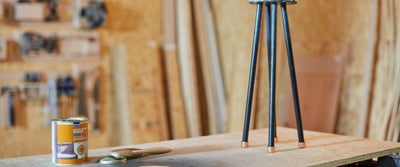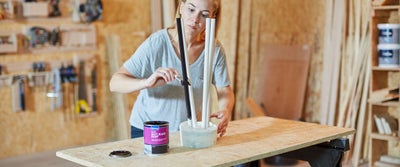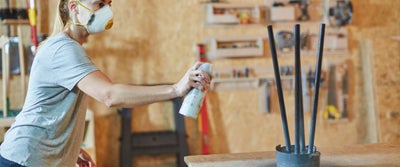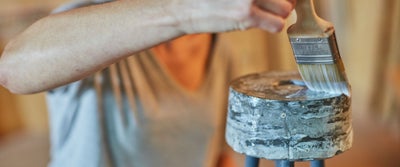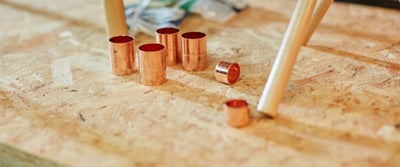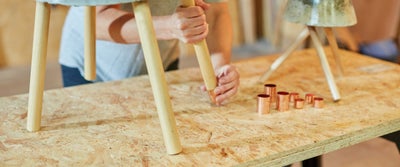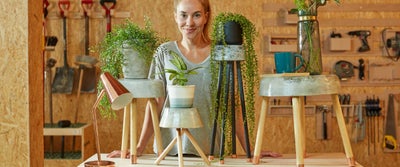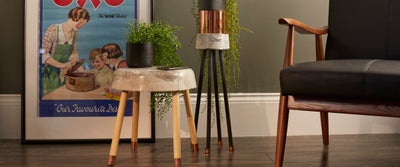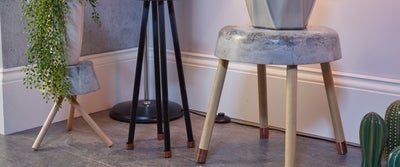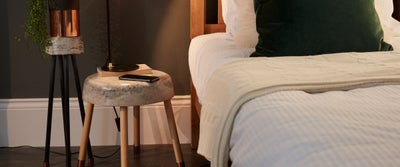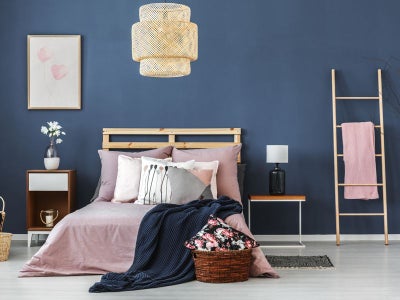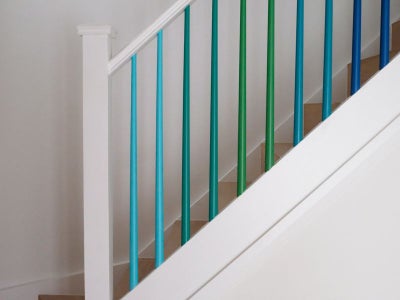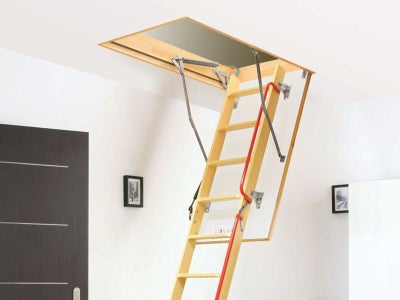How to make decorative concrete stools
TOOLS
MATERIALS
- Chalk finish grey spray paint
- Clear gloss spray paint
- End feet end caps (22mm)
- End feet straight coupling (15mm, 28mm)
- Interior matt black paint
- Interior varnish
- Rapid setting ready mixed cement
- Spray paint primer
- Water
- Light hardwood dowel moulding (18 X 18 X 2400mm)
- Light hardwood dowel moulding (28 X 28 X 2400mm)
- Offcut mixing stick
Planning & preparation
- We are going to show you how to make decorative concrete stools step by step.
- DIY concrete stools make for a fun weekend project and are a great addition to your home. Add some trendy and bespoke décor that has a range of uses from end tables to plant stands.
- Our step by step instructions are designed as a guide to give you a range of ideas, tips and techniques to create your own concrete stools.
- These concrete stools are completely custom to your space, style and the design you choose to go for. Simple and cost-effective to make, once you have the concrete mix, you can even utilise materials from around your home.
- There are many types of concrete available for DIY projects. For this project, we used a rapid-setting mix and a selection of plastic and silicone buckets, but you can try different mixes and containers for various looks.
- When it comes to the legs, feet and decorative touches, this project has lots of room for creativity. We used timber dowel legs, copper coupling and a range of different finishes including varnish and paints.
- Depending on what you already have to hand, the materials for this project will cost under £20 per stool and take a DIYer with moderate skill approximately 2 hours to construct. We recommend allowing a weekend to complete this project, to allow for curing and decorative dry times.
Doing it right
- If you don’t have access to a mitre saw, you can use a universal handsaw to cut the timber legs. Ensure your timber is securely clamped, then slowly cut through your scored line with a clean and sharp saw blade.
- The mixing ratios and cure times will vary depending on the type of concrete and manufacturer mix you go for. Be sure to check the packaging for instructions before starting work.
- When you have decided on how thick you want your stools to be, it can be a good idea to measure out the correct quantity of concrete mix to water and have these ready to pour. If you choose to work by eye, have a little extra of each material to hand, as you will need to work quickly once you start mixing.
- You can set concrete in anything that has a solid structure and isn’t porous. We recommend using plastic containers or silicone buckets as they offer some flexibility for removing the set stool. If your container isn’t pliable enough, you can run the risk of cracking the concrete on removal.
- There is no one right way to set the legs into the concrete. Go for equally spaced legs or bunch together and angle out from the centre for a wider base. This guide will show you several different setting techniques including using masking tape, templates and frameworks.
- We used an old plant pot to make our setting template, however, you can use whatever you have to hand. Try using a recycled bottle or tin, or if you’re feeling ambitious, make a template that’s the same diameter as your container for slotting the dowel through for precise placement.
- If you find there’s concrete residue left in your container after you remove the stool, you can either sand it away or repurpose the container for a new life.
- Watch our top tip videos for our Wickes DIY skills, tips and advice.
Staying safe
- Cured concrete can be quite heavy depending on how large you take your design. We recommend having another person around to help with removing the stool and lifting it onto the workbench.
- Working with concrete is dusty work. For safety, we recommend that you wear a dust mask, goggles and gloves when handling the mixture.
- Always ensure that your working space is well lit and ventilated, especially when working with machinery and decorative finishes.
- Always check the manufacturer’s label before applying any paints, stains or treatments.

